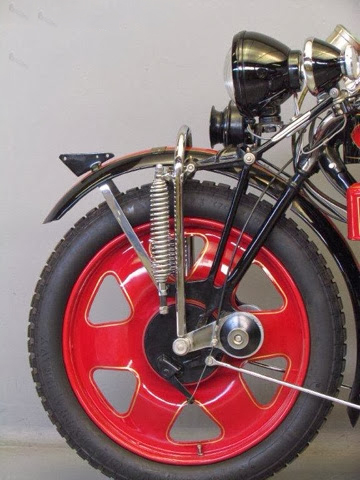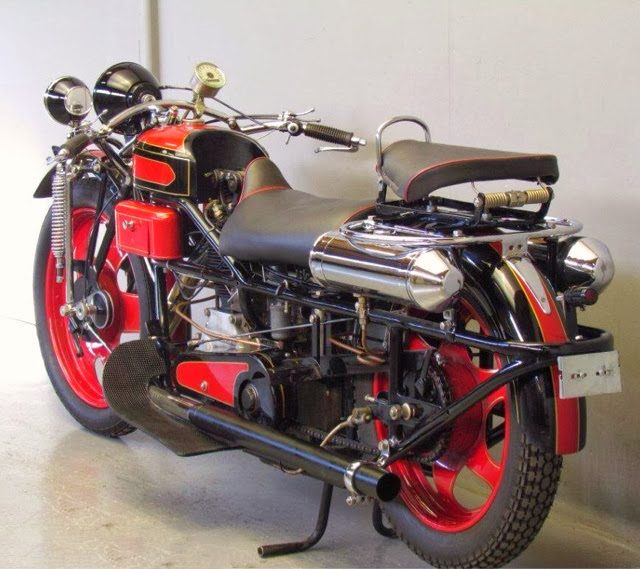Clik here to view.

In the 1920s, the Czech motorcycle industry pushed the technological forefront of engine and chassis design, producing the first series built double-overhead camshaft design (the Praga), as well as the longest production motorcycle in history, the Böhmerland. The brainchild of Czech engineer Albin Leibisch, the Böhmerland was built between 1925-1939 in Schönlinde, Sudetenland, and was almost entirely the result of Leibisch’s design and manufacture. That remarkable chassis of welded tubing, the unusual leading-link front forks, the engine, and the cast wheels (a pioneering use for motorcycles, not generally taken up until the 1970s!) were all made in-house, with only the gearbox and various ancillary parts bought-in (magnetos, carburetors, controls, etc). The small factory at one point employed 20 assembly workers, with parts supplied by local subcontractors; production eventually totaled around 3000 units.
Clik here to view.

The most visually distinctive feature of the Böhmerland was its great length, although several models were produced, from the shortest-wheelbase racing model with a claimed 96mph (160kmh) top speed, to a single-seater ‘Sport’ version, a 3-seater ‘Touring’ model (the most popular, and seen here; seating designation includes the pillion at rear), the extravagant 4-seater ‘Langtouren’ (Long Touring), and even an experimental military model with 4 seats and two gearboxes (the rear ‘box operated by a passenger), giving 9 possible ratios! With a sidecar attached, a Touring Böhmerland could safely carry 4 or 5 passengers, with more elegance and speed than nearly any contemporary automobile of the 1920s. Early models used twin petrol tanks, which kept the cylinder head visible and accessible to the rider/mechanic; later models used a more conventional ‘saddle’ tank (as seen here) which covered the top frame rails. Some later models also used cast steel wheels, as aluminum casting technology lagged behind the far-sighted ideas of Albin Leibisch!
Clik here to view.

Specifications of the ‘Touring’ Model seen here are a total length of 124” (317cm), with a wheelbase of 88” (223cm). The Leibisch engine is a sturdy overhead valve, dry-sump unit of 600cc (80x120mm bore/stroke), producing 24hp @5000rpm, with a top speed of 65mph (110kmh), giving a frugal 70mpg in normal use.
Clik here to view.

